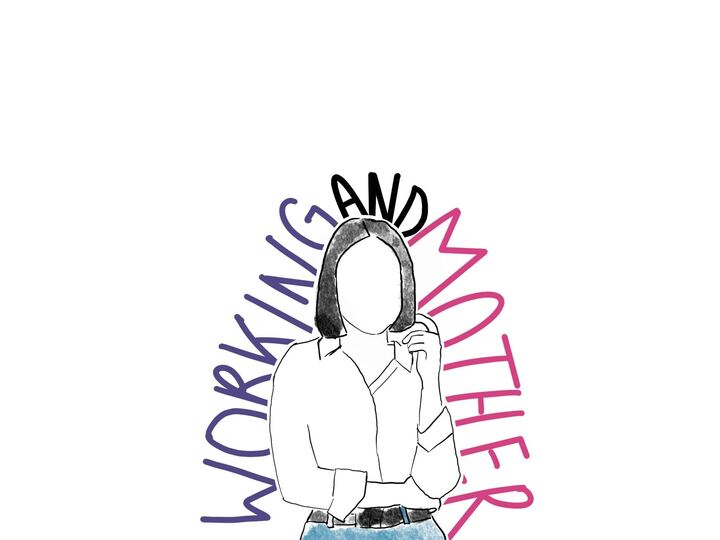Review: ‘Do Revenge’ fuses modern storytelling, cult classic films
“Do Revenge” premiered on Netflix Sept. 17. Courtesy of Netflix. © 1997-2016 Netflix, Inc. All rights reserved.
September 27, 2022
Netflix’s new original film, “Do Revenge,” escapes from the streaming platform’s usual cookie-cutter plots and transcends audience expectations. What seems to start as an everyday high school revenge story — think, “Mean Girls” or “John Tucker Must Die” — quickly transforms into a dark, convoluted narrative that leaves viewers on the edge of their seats, itching to watch this black comedy unravel.
With well-recognized actors like Camila Mendes from “Riverdale,” Maya Hawke from “Stranger Things” and Sophie Turner from “Game of Thrones” and a budget of $25 million, expectations were high for this film. Co-writer and director Jennifer Kaytin Robinson, creator of MTV’s “Sweet/Vicious” and a co-writer of Marvel Studios’ “Thor: Love and Thunder”, lived up to her impressive repertoire in “Do Revenge.”
Drea Torres (Camila Mendes) is a 17-year-old it-girl on a scholarship at a prestigious Florida private school pursuing her dream of getting into Yale University, when a nude video she made for her boyfriend, Max Broussard (Austin Abrams), is leaked and shared online. After a heated public argument between the two, Drea slaps and dumps Max, who claims the leak was an accident.
Soon after the exchange, Drea meets transfer student Eleanor Levetan (Maya Hawke), who reveals her own grievance toward a classmate. The pair form a pact to “do revenge” and get back at those who have wronged them. When characters reveal their darkest secrets and underlying motives, Drea and Eleanor work overtime to maintain their relationships, reputations and revenge plans.
Complex color combinations add depth to the subtext of “Do Revenge” by underscoring its characters and settings through unspoken aesthetic direction. Drea and Eleanor’s wardrobes consist of mainly soft pastel pieces, an ironically stark contrast to the dark palette that colors the rest of the film. Costume designer Alana Morshead shared that she designed Drea’s outfits to consist of cooler tones, reminiscent of ’90s supermodels, and Eleanor’s to feature warmer tones with prints, indicative of their distinct personalities. Likewise, Drea and Eleanor wear many statement earrings to complement their outfits, a decision Morshead made that she said was influenced by popular runway models from the ’90s, like Naomi Campbell and Claudia Schiffer.
“Do Revenge” pays homage to many classic ’80s and ’90s films, fusing decades of storytelling into one brilliant, transgenerational cocktail. There are many moments and costumes in the movie that pay respect to classic films such as “Clueless,” “Cruel Intentions,” “Fatal Attraction” and “Heathers.” In one scene, Drea and her love interest have a paint battle that later turns into a romantic date, mimicking the iconic original from “10 Things I Hate About You.”
“Do Revenge” references modern films like the female-led revenge movie “Promising Young Woman” when Eleanor smears her lipstick in anger while looking in the mirror just like Cassie, the protagonist of the 2020 black comedy. The soundtrack of “Do Revenge” helps facilitate the combination of these different generations of film cultures, spanning timeless ’90s rock, like “Celebrity Skin” by Hole, to modern pop songs, such as “Brutal” by Olivia Rodrigo.
“Do Revenge” also breathes modern life into Alfred Hitchcock’s “Strangers on a Train” from 1951, a story of two strangers who meet on a train and agree to trade murder targets to evade arrest. True to Hitchcock’s signature formula, the line between innocence and guilt in “Do Revenge” is blurred, and an unexpected, all-revealing twist toward the end of the film redirects growing suspense into climactic surprise. The film begs the audience to debate whether the revenge plans Drea hatches for her and Eleanor’s targets are too extreme for the wrongdoings their recipients committed.
On the other hand, viewers may protest that students like Max, who distributes pornographic content of an underage girl without her consent, receive tamer punishments than others whose crimes may be deemed less malicious. Robinson’s decision to pair each offense with such drastically different punishments mirrors modern society and reads as a commentary on the United States’ corrupt legal system.
Although Max performs an actual federal crime, he dodges its grave repercussions due to his privileged upbringing, economic power and political connections; his father is capable of erasing any blemish on their family name with a simple phone call to his powerful lawyer.
At one point, Drea rants in no vague terms about how predators are often able to evade the harsh aftermath of their crimes and leave women to feel fearful and resentful. While “Do Revenge” gives a voice to victims of sexual misconduct, it also shows the harm of mislabeling someone as a predator through Eleanor’s storyline. An accusation made against Eleanor traumatizes her and stunts her ability to trust and build relationships with others. As these two alternate plot lines weave together throughout the film, “Do Revenge” speaks to the ever-careful guard that women must take up as they navigate a world riddled with patriarchal barbed wire.
That being said, the movie does lack some crucial elements. Because the storyline relies on suspense, the exposition is too drawn-out, and the action that does occur tends to fall flat. Within the script, some contemporary slang in the dialogue comes off as forced and even very odd at times. Although the majority of the characters’ conversations sound natural and the acting is stellar, even the cast’s perfect deliveries can’t save a mid-sentence “lit” from feeling awkward and abrupt, as the script works to prove that the film’s cast members are indeed teenagers, although their appearances may suggest otherwise.
Beyond the cast’s 10-years-too-old appearance, the diversity within it stands out against Hollywood’s catalog of overwhelmingly white, heteronormative teen movies. Leading a similarly diverse cast, Drea is Latin American and Eleanor is queer, furthering representation of communities usually left out of Hollywood productions, let alone of the leading role.
As viewers consider the moral integrity of the protagonists and righteousness of their revenge, “Do Revenge” transforms Hollywood’s revenge trope into an intense — if pastel-clad — narrative that toes the line between right and wrong. The film takes unflinching strides in representation, pays homage to cult classic films and speaks to the real world through a comedy-meets-criminal, coming-of-age voice.


















